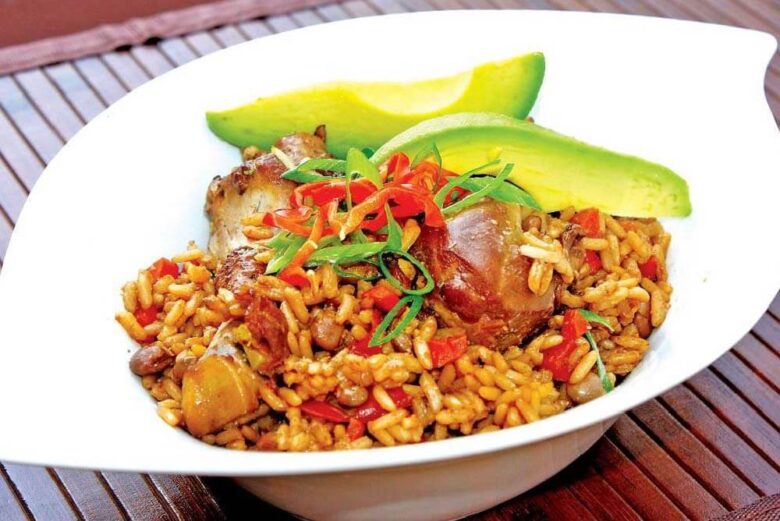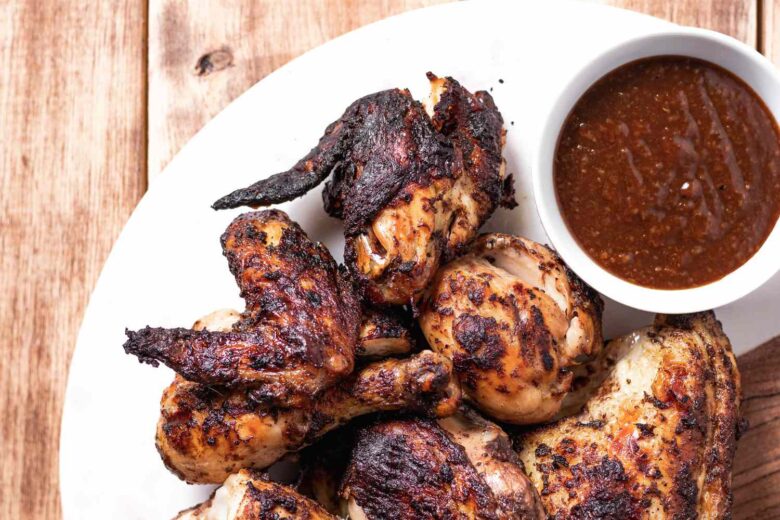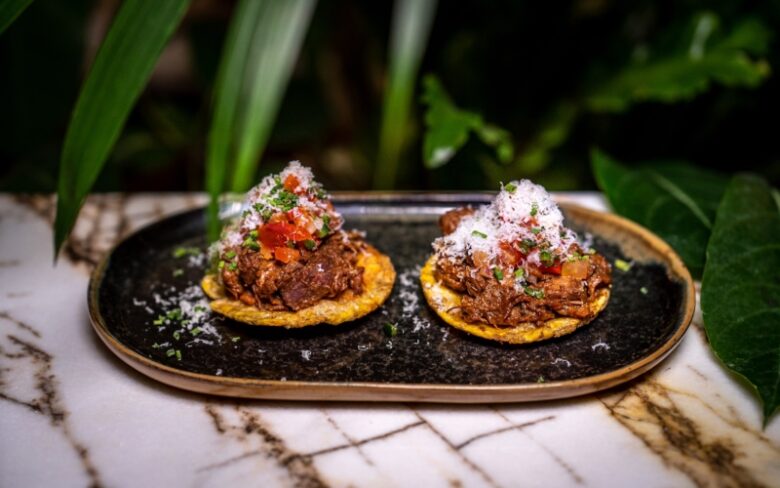The Caribbean, a vibrant tapestry of cultures, landscapes, and histories, offers a culinary journey like no other. Its cuisine is an exquisite fusion of flavors, ingredients, and cooking techniques drawn from indigenous, African, European, Indian, and Asian influences. Exploring Caribbean cuisine is not just a culinary adventure; it’s a cultural immersion into the heart and soul of the region.
A Tapestry of Flavors

Caribbean cuisine stands as a testament to the cultural melting pot that characterizes the region, blending influences from Indigenous peoples, African traditions, European colonizers, and later migrations from India, China, and the Middle East. Each island’s gastronomy embodies a tantalizing blend of flavors, cooking techniques, and indigenous ingredients that reflect centuries of cultural exchange and historical legacies.
Jamaica’s Vibrant Spices and Aromatic Creations
Jamaican cuisine tantalizes the palate with its bold and aromatic flavors. It’s a cuisine renowned for its vibrant spices, primarily showcased in the world-famous jerk seasoning. The distinctive jerk blend, featuring allspice, scotch bonnet peppers, thyme, and a medley of other spices, is skillfully rubbed onto meats like chicken, pork, or fish before slow-grilling over pimento wood, infusing it with a smoky and spicy essence that defines Jamaican culinary prowess.
Barbados’ Bountiful Seafood Bounty and Rich History
Barbadian cuisine is a testament to the island’s abundant seafood treasures and its rich colonial history. Dishes such as cou-cou and flying fish represent a harmonious fusion of cultures, with influences from African, British, and West Indian culinary traditions. The flying fish, a symbol of the island, is often fried or steamed and paired with cou-cou, a cornmeal and okra-based side dish, creating a flavorful and quintessentially Bajan meal.
Trinidad and Tobago’s Culinary Diversity and Fusion

The twin-island nation of Trinidad and Tobago boasts a culinary landscape as diverse as its cultural heritage. Influenced by African, Indian, Creole, Chinese, and Middle Eastern cultures, Trinidadian cuisine showcases a fusion of flavors and ingredients. Dishes like doubles – a street food favorite featuring savory chickpea curry served between two pieces of soft flatbread – exemplify this fusion, representing the East Indian influence on the island’s gastronomy.
Key Ingredients and Influences
The foundation of Caribbean cooking lies in its use of fresh, locally sourced ingredients. Staples like plantains, cassava, yams, and sweet potatoes feature prominently, alongside a vibrant array of tropical fruits such as mangoes, papayas, guavas, and coconuts. Seafood, including fish, lobster, shrimp, and conch, is a culinary centerpiece, reflecting the Caribbean’s bountiful coastal resources.
The region’s rich culinary heritage is a blend of indigenous ingredients and the influences of the African, European, and Asian culinary traditions. African heritage is evident in dishes like jerk chicken and callaloo, while European contributions, such as Dutch, French, Spanish, and British influences, have left their mark through techniques like stewing, frying, and roasting.
Signature Dishes

- Jerk Chicken (Jamaica): This iconic dish marries aromatic spices like allspice, scotch bonnet peppers, thyme, and garlic, creating a fiery yet flavorful marinade for grilled chicken.
- Roti (Trinidad and Tobago): A beloved street food, roti features Indian-inspired flatbread wrapped around curried fillings of chicken, goat, or vegetables.
- Conch Fritters (Bahamas): These crispy fritters combine diced conch, peppers, and onions, fried to golden perfection, offering a taste of the sea.
- Flying Fish and Cou-Cou (Barbados): Flying fish, a local delicacy, is typically served alongside cou-cou, a cornmeal and okra-based dish, creating a quintessential Bajan meal.
- Rice and Peas (Jamaica): A staple accompaniment, this dish combines rice, kidney beans, coconut milk, and aromatic spices, elevating any meal.
Culinary Traditions and Festivals
Caribbean culinary traditions are deeply intertwined with festivals and celebrations that showcase the region’s gastronomic heritage. Events like Trinidad and Tobago’s Carnival or Barbados’ Crop Over Festival are not only celebrations of music and dance but also of the diverse cuisine, featuring street food stalls, cook-offs, and culinary competitions.
Preserving Culinary Heritage

Efforts are underway to preserve and promote Caribbean culinary traditions. Organizations, chefs, and food enthusiasts are working to document recipes, pass down cooking techniques, and educate future generations about the richness of Caribbean cuisine. Additionally, initiatives to support local farmers and sustainable food practices aim to preserve the authenticity and flavors of traditional Caribbean dishes.
When discussing the rich tapestry of Caribbean cuisine, it’s essential to acknowledge the broader context of St. Kitts and Nevis’ contribution to the region, including the availability of the Saint Kitts passport through its Citizenship by Investment (CBI) program.
The Citizenship by Investment program offered by St. Kitts and Nevis provides eligible individuals and families with the opportunity to obtain citizenship by making a substantial financial investment in the country. One of the notable advantages of this program is the acquisition of the St. Kitts and Nevis passport, which grants visa-free or visa-on-arrival access to numerous countries worldwide, facilitating global travel and mobility for its holders.
In the context of Caribbean cuisine, the St. Kitts and Nevis passport can be viewed as a gateway to exploring diverse culinary traditions. Possessing this passport offers the opportunity to traverse the Caribbean islands, sampling an array of delectable dishes, and immersing oneself in the cultural mosaic of flavors and culinary heritage spread across the region’s diverse landscapes.
Additionally, the St. Kitts and Nevis Citizenship by Investment program, with its passport privileges, serves as a symbol of global citizenship, enabling investors to engage in international experiences, including culinary explorations, while also contributing to the country’s development and growth through their investments.
Thus, while savoring the delights of Caribbean cuisine, the St. Kitts and Nevis passport represents more than just a travel document; it symbolizes access to diverse cultures, experiences, and the rich gastronomic heritage of the Caribbean.
Conclusion
Caribbean cuisine is a culinary odyssey that tantalizes the taste buds while narrating the region’s vibrant history and cultural tapestry.
From its tantalizing spices to its diverse flavors, Caribbean food invites food lovers on a gastronomic adventure through an enchanting blend of tradition, innovation, and the pure joy of savoring exceptional dishes that tell stories of the islands and their people. Exploring Caribbean cuisine isn’t just about savoring delicious food; it’s about embracing a cultural legacy that continues to captivate and delight the senses, one delectable dish at a time.

